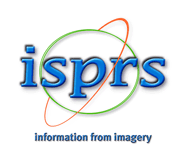A Data-driven Smart District Toward Net Zero Using Generative Design and Urban Digital Twins: A Use Case of Nihonbashi, Tokyo
Keywords: Urban Digital Twins, Generative Design, Multi-Objective Optimization, Urban Building Energy Modeling (UBEM), Carbon Neutrality, Smart District
Abstract. This study presents a data-driven framework for transforming high-density urban districts toward carbon neutrality through the integration of Generative Design (GD), Multi-Objective Optimization (MOO), and interactive Urban Digital Twins. Using Tokyo’s Nihonbashi District as a case study, the research addresses the challenge of retrofitting 154 existing buildings under spatial and regulatory constraints. Buildings are categorized into three retrofit strategies—Reconstruction, Renovation, and Maintenance—based on structural condition, building age, and energy performance. The proposed methodology consists of a three-stage process: (1) baseline performance assessment using Urban Building Energy Modeling (UBEM), (2) design generation and evaluation of alternative design scenarios via parametric modeling and optimization across four key criteria (Resilience, Energy Performance, Financial Feasibility, and Social Impact), and (3) real-time scenario exploration through an interactive digital twin’s interface. Additional modeling layers include occupancy analytics and renewable energy simulations. Results indicate that coordinated redevelopment and hybrid energy strategies could achieve significant reductions in energy use intensity (up to 99 kWh/m2/year) and support on-site generation (up to 42.5 kWh/m2/year). The framework provides a scalable approach for carbon-neutral urban regeneration that balances technical, environmental, and human-centered goals.





